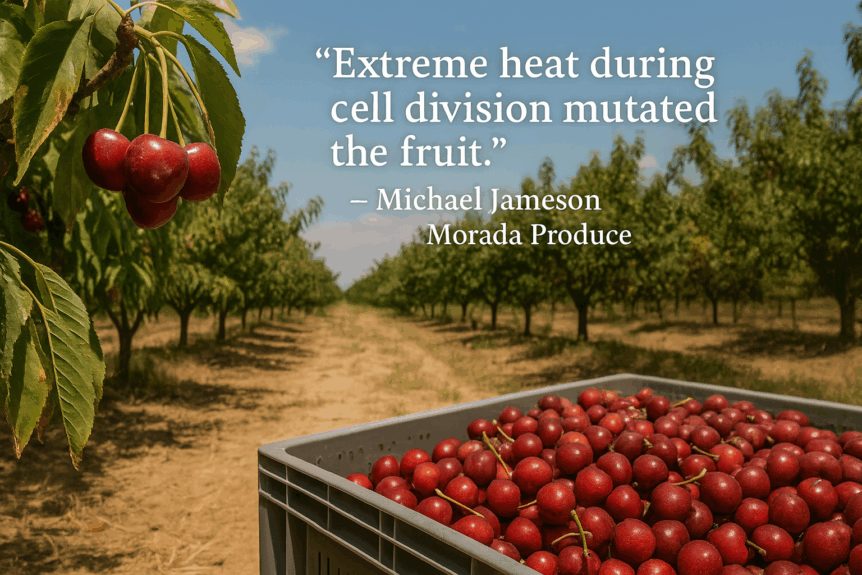
The California cherry crop took a significant hit this year, and according to industry veteran Michael Jameson of Morada Produce, the weather is largely to blame.
In an interview with Nick Papagni of AgNet West, Jameson pointed to last summer’s intense heat wave—temperatures ranged from 108 to 112 degrees—as a key factor impacting fruit development.
“It actually mutates the cell when the cherry trees are going through cell division,” Jameson explained. “You end up getting a higher percentage of number two quality.”
Multiple Weather Factors at Play
The issues didn’t stop at heat. Jameson noted that poor pollination conditions during bloom also played a role. Early rains and cool weather interfered with bee activity, reducing effective pollination across orchards.
“You have to have the bees working,” he said. “And during bloom, they just weren’t able to do their job.”
Additionally, Jameson pointed out that cherry trees were recovering from two consecutive high-yield years. Trees need sufficient dormancy to rebuild strength, and fatigue may have further reduced yields this season.
Crop Quality Concerns
While some fruit made it to market, the bulk of the yield fell into the “number two” quality category—less desirable for top retail markets and international export. The resulting lower-value harvest has growers concerned about profitability.
Still, there is optimism that cooler temperatures and proper dormancy going forward could lead to better seasons ahead.
You can catch both of the full interviews Nick had with Michael. First dealing with walnuts, walnut market, and all agriculture concerns of the walnut producers in California. And the other full interview about cherries, where many top, hot, topics of California agriculture interest are discussed.










